A.L. All-Stars Provide Perfect Ending
By John Gilbert
MINNEAPOLIS, MN. — All the pregame ceremonies worked well, from the celebrity softball game, the rain-delayed Home Run Derby, the Minneapolis Convention Center’s Fan Fest, the pregame flyover by the six-fighter-jet formation of the Air Force Thunderbirds, who had prepped for the job by parking at the Duluth Airport. Rod Carew threw the ceremonial first pitch, and a stirring version of Bob Dylan’s “Forever Young” preceded the Canadian and American national anthems.
But all of the pre-game buildup was just preliminary to the main event — the Major League Baseball All-Star game.
Everything worked out to perfection for the 41,048 fans at Target Field, where weeklong scares that Minneapolis would face its coldest July 15 in history dissolved in sunny, 72-degree perfection. It was still about 65 when the American League finished beating the National League 5-3, which secured home-field advantage for the designated-hitter league in the World Series.
The mob of media, however, always looking for a controversial angle, embarrassed itself by making one up. The idea that National League starter Adam Wainright might have purposely tossed an easy pitch to leadoff man Derek Jeter, in fact, became a national controversy that overshadowed the game itself.
Everybody paid tribute to Jeter, the retiring New York Yankees icon, who started at shortstop for the American League and led off the batting order. In the top of the first inning National League leadoff man Andrew McCutcheon smacked a hard ground ball toward center field, but Jeter raced to his left, dived to spear the ball in his glove, then got up and threw to first. Now it wasn’t a bullet throw, like Jeter might have fired five years ago, but it was accurate. In a very close play, McCutcheon was called safe, although the American League escaped any damage.
In the last of the first, 6-foot-7 St. Louis ace Adam Wainright overthrew a fast ball that was too fast, obviously fueled by the adrenaline of the moment, and it bounced before getting to the plate. Wainright came back with what looked like another fastball but was later described as a “90-mph cutter,” or cut fastball. It was on the outside part of the plate, and while it almost got by Jeter, his late swing sent it up the right field line, where it ricocheted through the corner for a double.
That sparked a 3-run American League first inning, and the media almost immediately caught up to Wainright, who said, he intended to “pipe a couple” to Jeter. The media frenzied, claiming that Wainright said he was going to groove some pitches for Jeter to hit, as a tribute. Wainright tried to counter the impression later, saying if he knew Jeter was going to hit a double, he would have changed plans. It wound up being the lead item on the game on ESPN, on local newscasts, and in major columns in newspapers. Wainright was accused of hurting the integrity of the game by trying to set up Jeter.
For anyone who has played the game, and especially for anyone who has pitched, the whole controversy is contrived by media who were all looking for a unique twist. Wainright is a fastball pitcher, and one of the beauties of the All-Star Game is that a pitcher will try his strength against the strength of a prized opponent. The media who say Wainright set Jeter up apparently watched too much of Monday night’s home-run contest, wherein pitchers selected by the hitters lob perfect deliveries to help the batters hit as many home runs as possible. If Jeter, one of the game’s greatest hitters, was being set up, how come he barely got around on Wainright’s fastball? Why didn’t he pull it to left?
Anyone who has played knows there are times when a hitter might “go the other way” by punching an outside pitch to right to advance a runner to third; there are other times when a fast pitch almost gets by a hitter, whose late reaction is just in time to hit the ball to the opposite field. This was a case of “B.”
From the pitcher’s point of view, if there is anything more exhilarating than throwing a fastball by a hitter, it’s throwing a fastball by a great hitter for a strike. If Wainright said he wanted to “pipe” a pitch or two to Jeter, I’ll guarantee you he meant he wanted to throw a hard strike past Jeter.
In fact, Mike Trout of the Angels, the best hitter currently in baseball, was next up and slammed a Wainright pitch off the wall in right center, as Yasiel Puig jumped high for a near miss. The ball caromed back toward the infield as Trout circled the bases. Good as he is, Trout also was a little late on a Wainright fastball, but nobody suggested that pitch was “piped.” After striking out Robinson Cano, Wainright also didn’t groove the pitch to Miguel Cabrera, who hit an absolute missile into the left-field seats for a 2-run home run and a 3-0 first-inning lead. The blast barely cleared the fence, but if the grandstand hadn’t been there, that ball might still be flying.
Beyond that, all the storybook stories that had been foretold came true at game time. Jeter added a single in his second time up, before being ceremoniously replaced in the field to prolonged ovations. Trout, the Angels monster talent who is seen as the likeliest player to supplant Jeter as baseball’s primary ambassador, not only tripled, but also hit a double to drive in a later run, and wound up as the game’s most valuable player, which meant he got to choose between Chevrolet’s 2014 car and truck of the year: The Chevrolet Corvette and a new Chevrolet Silverado pickup truck. Big Mike chose the Corvette Sting Ray.
The other big story lines included the local guys. Twins closer Glen Perkins made his first All-Star team in 2013, but when the game ended, he was in the bullpen, the only player who didn’t get in the game. He had another chance this time, and new Twins catcher Kurt Suzuki was also a spare on the A.L. team. Sure enough, when the Americans held their 5-3 lead in the top of the ninth, the big crowd roared when Perkins came jogging in from the bullpen. American League manager John Farrell of the Boston Red Sox made a great move when he also inserted Suzuki as the last-inning catcher. Bing, bang, boom, Perkins induced a fly to center, struck out Josh Harrington, and ended the game with a harmless grounder to second. Perfect save for the hometown, and home team, closer.
Perkins fared better than Pat Neshek, the submarine-throwing reliever released by the Twins when he had some problems in 2010. After a couple other failures, and the tragic death of his new baby, Neshek toyed with leaving the game. But he and his wife Stephanie had a new baby, just as Neshek picked up the pieces this year in the unlikely location of St. Louis, where the Cardinals are pitching rich. Neshek worked his way to the position of set-up man, which means he pitches an inning or two of relief to pave the way for the closer to finish off foes. Neshek is 4-0 and hasn’t allowed an earned run since sometime in April. With a few scratches on the National League pitching staff, Neshek was a late addition to the staff.
When Neshek, a Brooklyn Park native and former Park Center high school star, came in for the N.L. in the fifth inning of the All-Star game, the crowd gave him an appreciative ovation, even though the Nationals had just tied the game 3-3. Neshek was greeted by a flurry of unfortunate singles, and didn’t survive the inning, yielding two runs — the difference in the game.
Even then, there were enough big hits, great defensive plays, strong pitching, and quality play from the well-known starters through the little-known subs to make it a very entertaining All-Star Game.
On the National League side, Milwaukee’s impact was impressive. Third baseman Aramis Ramirez led off the second with a single, and after Chase Utley doubled home a run, Brewers catcher Jonathan Lucroy doubled home another run to make it a 3-2 game. It became 3-3 in the fourth when Utley was hit by a pitch and Lucroy hit another double to drive him in. The whole show was a lot of fun, very entertaining, and not only put Target Field on the map among Major League visitors, but gave Minneapolis the chance to show off all its great restaurants and hospitality features.


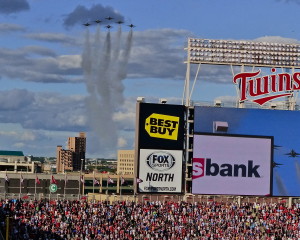

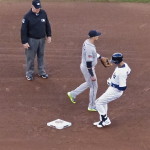
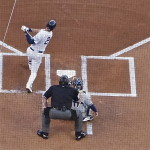

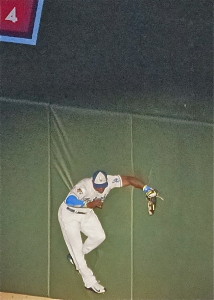
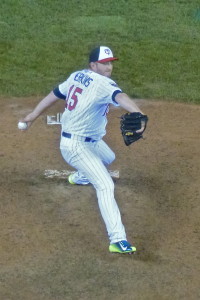
 John Gilbert is a lifetime Minnesotan and career journalist, specializing in cars and sports during and since spending 30 years at the Minneapolis Tribune, now the Star Tribune. More recently, he has continued translating the high-tech world of autos and sharing his passionate insights as a freelance writer/photographer/broadcaster. A member of the prestigious North American Car and Truck of the Year jury since 1993. John can be heard Monday-Friday from 9-11am on 610 KDAL(www.kdal610.com) on the "John Gilbert Show," and writes a column in the Duluth Reader.
John Gilbert is a lifetime Minnesotan and career journalist, specializing in cars and sports during and since spending 30 years at the Minneapolis Tribune, now the Star Tribune. More recently, he has continued translating the high-tech world of autos and sharing his passionate insights as a freelance writer/photographer/broadcaster. A member of the prestigious North American Car and Truck of the Year jury since 1993. John can be heard Monday-Friday from 9-11am on 610 KDAL(www.kdal610.com) on the "John Gilbert Show," and writes a column in the Duluth Reader.